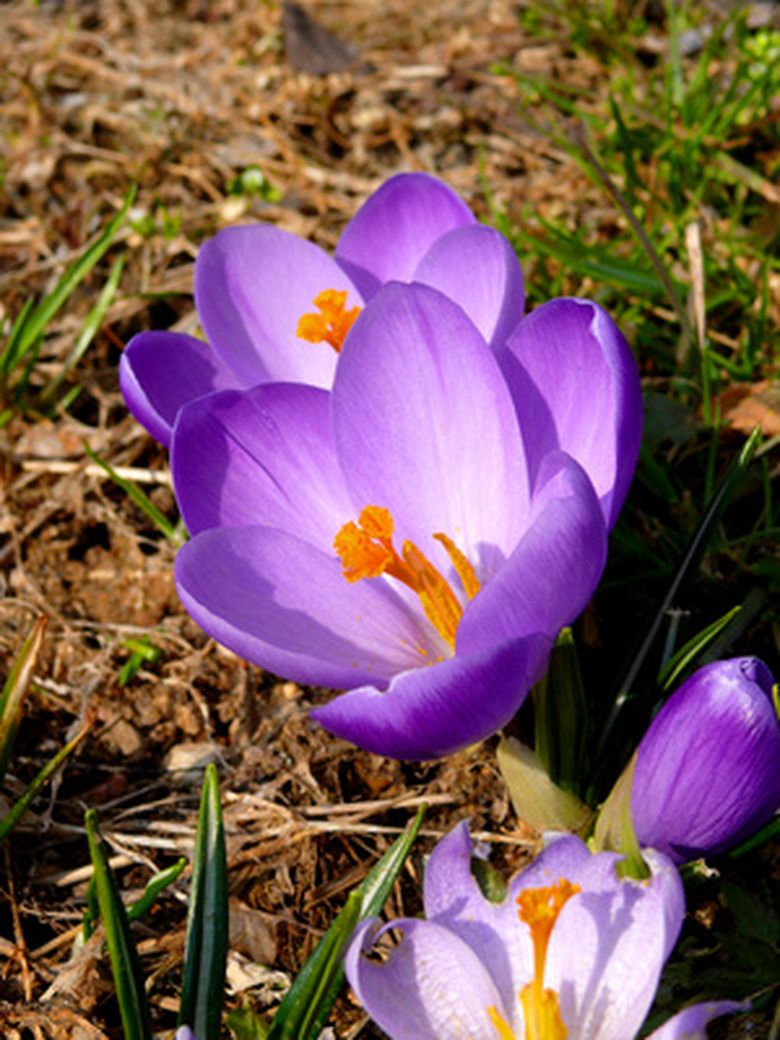Facts On Sexual Reproduction In Plants
Although plants have male and female parts, sexual reproduction in the plant kingdom is wildly different than what you find in animals. Although male and female cells provide genetic material to a child plant much like the animal kingdom, this may be done asexually also. Plant sexual reproduction is highly complex and diverse.
Plant reproduction
In the plant kingdom, male and female cells called gametes form into a single cell called a zygote. This zygote will then divide itself. According to the Encyclopedia Britannica, during asexual reproduction, in which a plant has both male and female parts, the child plant will resemble to parent plant identically. Sexual reproduction will create a plant that has traits of both parents.
- Although plants have male and female parts, sexual reproduction in the plant kingdom is wildly different than what you find in animals.
- According to the Encyclopedia Britannica, during asexual reproduction, in which a plant has both male and female parts, the child plant will resemble to parent plant identically.
Asexual Reproduction
Plants reproduce asexually by rooting themselves in new ways that spread the plant to new areas. The stem of a plant that has fallen over may take root, creating a new plant. Leaves that fall from the plant while young, or those clipped from a plant and dipped in rooting hormone will develop new roots. According to the University of California Museum of Paleontology's website, some plants are able to produce seeds without their flowers being fertilized. Portions of a plant's root split off from the plant and may grow into a new plant as well, especially in the case of weeds whose roots are rhizomes.
Sexual Reproduction
Sexual reproduction is accomplished when the female part of the plant is fertilized by the male. Pollen produced by the male part of one plant is transferred to the female reproductive organs of another plant. The eggs of the plant, stored in the stigma, style and ovary are pollinated by the pollen and produce seeds. In many cases, pollen is transferred on the wind or by insects that feed on the nectar of a plant, transferring the pollen when they fly from plant to plant.
- Plants reproduce asexually by rooting themselves in new ways that spread the plant to new areas.
- Leaves that fall from the plant while young, or those clipped from a plant and dipped in rooting hormone will develop new roots.
Seed
Sexual reproduction produces seeds in the plant, which are sent out on the air or dropped from the plant into the soil, where they grow into new plants. A seed will contain the genetic material of both parent plants. Seeds are the main mode of cross-breeding plant species.
Spores
Spores are also used by some plants, such as moss, to reproduce. According to the Encyclopedia Britannica, spores are single cells that are produced through meiosis. Spores travel through the air and germinate when they land in a favorable location. Fungi also reproduce through this method.
- Sexual reproduction produces seeds in the plant, which are sent out on the air or dropped from the plant into the soil, where they grow into new plants.
